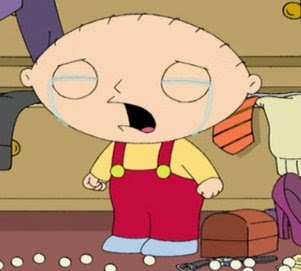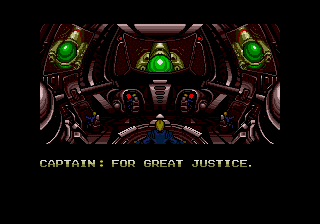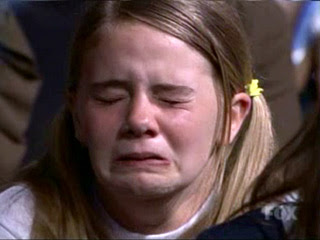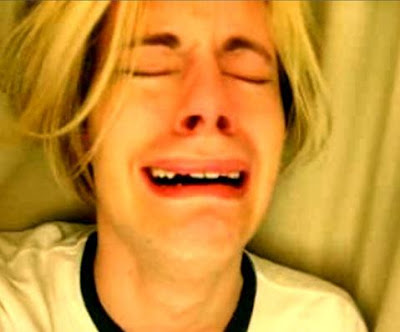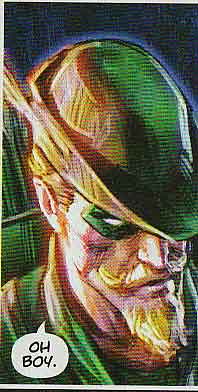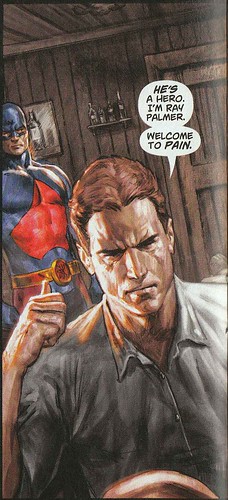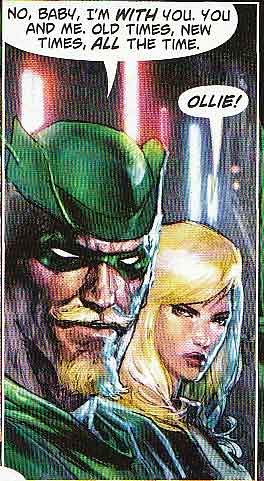'tisn't easy bein' green, tee tee tee tee tee
/I've never been a massive fan of St. Patrick's Day -- it is one of those days where I want to get the hell off the streets before the sun goes down to avoid "Amateur Night", where all of the people who really don't know how to drink large amounts of alcohol get to, in fact, prove that. I do like how Ben's school does it though. In Kindergarten and First Grade (at least) they have the kids build and design "leprechaun traps", which is a fun project that really exercises both the kid's creativity as well as their engineering skills. Ben built an awesome "bank" for the "Leps" to "rob", with ladders to climb, and a collapsing rug over this neat net trap. He covered it in shiny paper and chocolate coins and (ha ha!) Lucky Charms cereal. It probably isn't very culturally sensitive (though the Irish-as-in-actually-FROM-Ireland parents in the class thought it was a hoot), but these little 6 and 7 year olds really went all out in coming up with non-lethal ways to catch the Leps. Mechanically, some of them were really cleverly designed.
In Kinder, I did most of the construction for Ben (he didn't have the manual dexterity then), but I left it mostly to him this year -- about the only thing *I* did was show him how to to cut a hole in the "rug" so it would "collapse" into the actual trap area, but not show the trap (I cut an "x" in the center of the rug) -- and his trap was the most popular one with the kids, which made me deathly proud.
Anyway, yesterday afternoon the kids carefully set their traps up all over the room (they called them "L.T.s", in case any of the Leps were listening in [Sneaky bastards!]), and went home.
This morning they came in, and the classroom was totally wrecked! Desks turned sideways, chairs thrown around, "Lep dust" on everything... and all of their traps wrecked, in a giant pile, with parts tacked up to the wall, whatever. There was even a clear line of "Lep dust" that lead out a window, that some of the clever little detective girls found. It was chaos, it was madness, and it was an enjoyable of a morning as I've ever spent in class as the kids all screamed (in joy!) at the disaster the Leps left.
The Lep even left a note, and a sack of potatoes (!) for the kids. Apparently, they're going to do a science lesson today with turning those solids into liquids (soup)
This has nothing to do with comics, I know, but I was entertained...
What I wasn't really at all entertained by was last weeks JUSTICE LEAGUE RISE AND FALL SPECIAL and this week's GREEN ARROW #31...
...which both made me think of other things I had read on the net this week. One of those was this interview with Steve Englehart on Newsarama, where Steve says, in response to "do you want to do more comics?":
The last stuff I did for Marvel and DC had way too much editorial back-and-forth. Once upon a time, editorial said, “These are your books, do whatever you want to do.” The story I’ve told a zillion times is that Roy Thomas said, “We’re giving you Captain America – if you can make it sell, we’ll keep you on, if not, we’ll fire you and we’ll get somebody who can.”
That was the sum total of the editorial influence! What I did and what Steve Gerber and those other guys did came from that. Now, editorial says “Here’s what we’re going to do with the line and the major books, and we’ll just get people to fill in the blanks.”
The other thing I read that I flashed on was Buddy Saunder's letter to CBG that Stephen Bissette reprinted in his excellent ongoing series about the rise of comics labeling in the 80s.
Then, as now, I disagreed with a number of Buddy's points -- especially with his seeming insistence that comics are, would continue to be, and should be anything other than a juvenile medium for juveniles (that's a dramatic oversimplification of his point)
Now, despite the perhaps foolish nature of some of his complaints, a tremendous amount of what he said ended up coming reasonably true -- "mainstream" superhero comics are really unacceptable for kids these days; I literally can't have my son look at this week's new books until I fully vet them first, and that's a pretty drastic sea change from 1980-something, and probably not one for the better.
I've been thinking of this all this week anyway, as I decided Ben was probably old enough for James Bond films. He saw the box for Live and Let Die at the library, and wanted to know what was up with the skull-faced guy. So we borrowed that, and quickly went through The Man With the Golden Gun and The Spy Who Loved Me, and since they didn't have Moonraker in stock, we went backwards to Goldfinger, and we'll do the rest of the Connery pictures soon.
These are, of course, violent films, and there's a smattering of salty language ("Daddy, he said the 's' word!") -- but the violence is generally cartoony. When Bond mows down a line of Faceless Minions with a machine gun, they all just kind of fall over, bloodlessly, y'know? The character Jaws is scary to Ben, but it isn't gross or anything, even when he bites people.
But Ben also saw Goldeneye and wanted to see that one, and I hesitated, because my memory says that by the Dalton era the violence starts getting ramped up with blood flying around, and that I am less than cool with. I don't know, maybe I'm being silly, but I want Ben to be able to enjoy things I enjoyed when I was his age-ish, but we hit a point culturally where violence is portrayed harshly, and I don't trust his instincts that those things aren't "Cool!", and maybe desensitizing him.
So, when I read comics like those Green Arrow ones, I wonder: "who is this really aimed at?" and "why are they doing this?" -- on screen graphic murder and dismemberment, with blood spraying everywhere... clearly "Justice League"-branded material is no longer suitable for kids, but I don't know any adults who are saying that this is what they want or need to see.
I might, maybe, be able to justify it in my mind if it lead to giant sales, or massive interest in Green Arrow -- DC seems to be trying to manufacture a "Big Year!" for GA, but after week 1, our sales on JL:R&F are barely a third of JL:CFJ #7, and while, sure, that's 50% above "normal" GA sales, that's still that sales level where it is barely profitable for me to even rack the book in the first place, and I suspect all of that "bounce" will be gone by this time next month anyway.
Dubious editorial direction leading to no long term sales benefit, and putting a somewhat viable character in a position that doesn't appear to have a lot of real long-term storytelling potential... I dunno, this doesn't seem to me to be a smart plan?
I probably wouldn't mind as much if there was stunning craft on display, but these comics just simply felt mechanical to me -- like the editorial flow chart says this beat must happen here and that one there, so get to it, Mr. Writer Cog. And I know story-logic goes out of the window when you're talking about superpowers, but I have a hard time believing that the guy with the Magic Wishing Ring (which can find ONE person "without fear" in a population of billions in a split second), or the other guy who can run from here to Africa between heartbeats is going to have ANY problem dealing with a guy and a bow, even IF he's "hiding in the sewers".
Plus the less said about Conner renouncing Buddhism, the better.
I don't know, I found these comics to be mechanical, souless, repellent, and very very AWFUL.
What did YOU think?
-B


